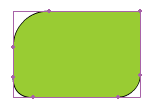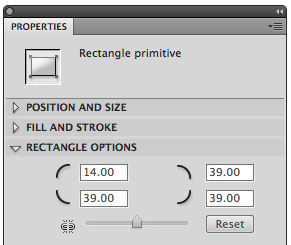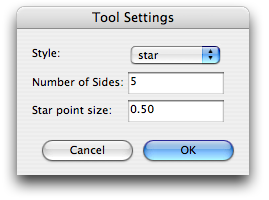Grouping shapes
To prevent the automatic segmenting of overlapping shapes, either use the Object Drawing mode (described below), or group artwork as soon as you create it (MODIFY > Group). Grouped artwork appears with a blue box surrounding it when you select it:

However, once grouped, artwork cannot immediately be modified. To change a group, double-click it.
This takes you "inside" the group, where you can modify the elements of the group, but NOT other artwork that isn't part of the group. Try single- or double-clicking on the Girl (which is a grouped piece of artwork) below:
The "Glass Box" Metaphor
It may help to think of grouping in Flash as placing artwork inside a glass box. You can see the artwork, but cannot get at it to make any changes. It's even possible to place that glass box inside another one (by selecting a group and choosing MODIFY > Group).
This creates a nested group, and works like nesting folders within other folders on your hard drive. To edit the original artwork, you have to double-click the outer glass box, and then double-click the group inside to make any edits. Each level of grouping is displayed next to "Scene 1" at the top of the document window:
![]()
One of the biggest problems for new Flash users is not realizing they have "entered" a group by double-clicking something. Most of the time you want to work in Scene 1, and NOT inside a group, so keep an eye on the upper left corner of your document window. If it displays "Group" next to Scene 1, click "Scene 1." to get out of the group (or nested group).
Drawing Objects behave a lot like groups. Yet you CAN edit a drawing object without double-clicking it, unlike a group.
It is also possible to double-click a Drawing Object to "go inside" it, just ike a group. If you do that instead of break it apart, be sure to exit the drawing object (just like a group: click the words "Scene 1" at the top of the document window).
Primitive Shape Tools
The Rectangle Primitive, and the Oval Primitive do not offer an Object Drawing mode, since they can't be segmented (without first being broken apart). The Rectangle Primitive tool creates a rectangle with editable corner radii (each can be changed separately):

Click the Chain link icon on the Properties panel to be able to drag an individual corner of the shape with the Select tool (or edit the value precisely on the Properties panel):

The Oval Primitive tool creates ovals, rings, and wedges. Drag the edge points to create wedges; drag the centerpoint to create rings:

The PolyStar tool
The PolyStar tool can be set to draw polygons or stars (select the PolyStar tool and click the Options button on the Properties panel):

You can set the Style to Polygon or to Star. When drawing stars, set the Star Point size to any number from zero to one (the larger the number, the fatter the star):

Unfortunately there is no PolyStar Primitive tool, so you cannot easily change the number of sides or the star point size after the fact; you have to create a new shape and delete the old one.
Recapping the types of things you can draw:
Shapes—these are drawn with any shape-creating tool (except the two "Primitive" tools), when Object Drawing mode is NOT turned on. Shapes all have the same depth in Flash, so no shape can be in front of any other shape (that's why they segment each other, and why they can't overlap other objects in this list)
Drawing Objects—these are drawn with any shape-creating tool (except the two "Primitive" tools), when Object Drawing mode IS turned on. You can reshape and recolor them, but you cannot delete pieces of them.
Primitive Objects—there are only two kinds: Rectangle and Oval primitives. These cannot be reshaped except for their uniquely editable features (illustrated above).
Groups—a group is a collection of any of the previous three object types, locked into a specific configuration.
When you select any object on the stage, the top of the Properties panel tells what you have selected:
![]()
Basic Shapes
See if you can draw these shapes (including matching the colors). Save your work; I may ask you to upload these at the end of the course:
